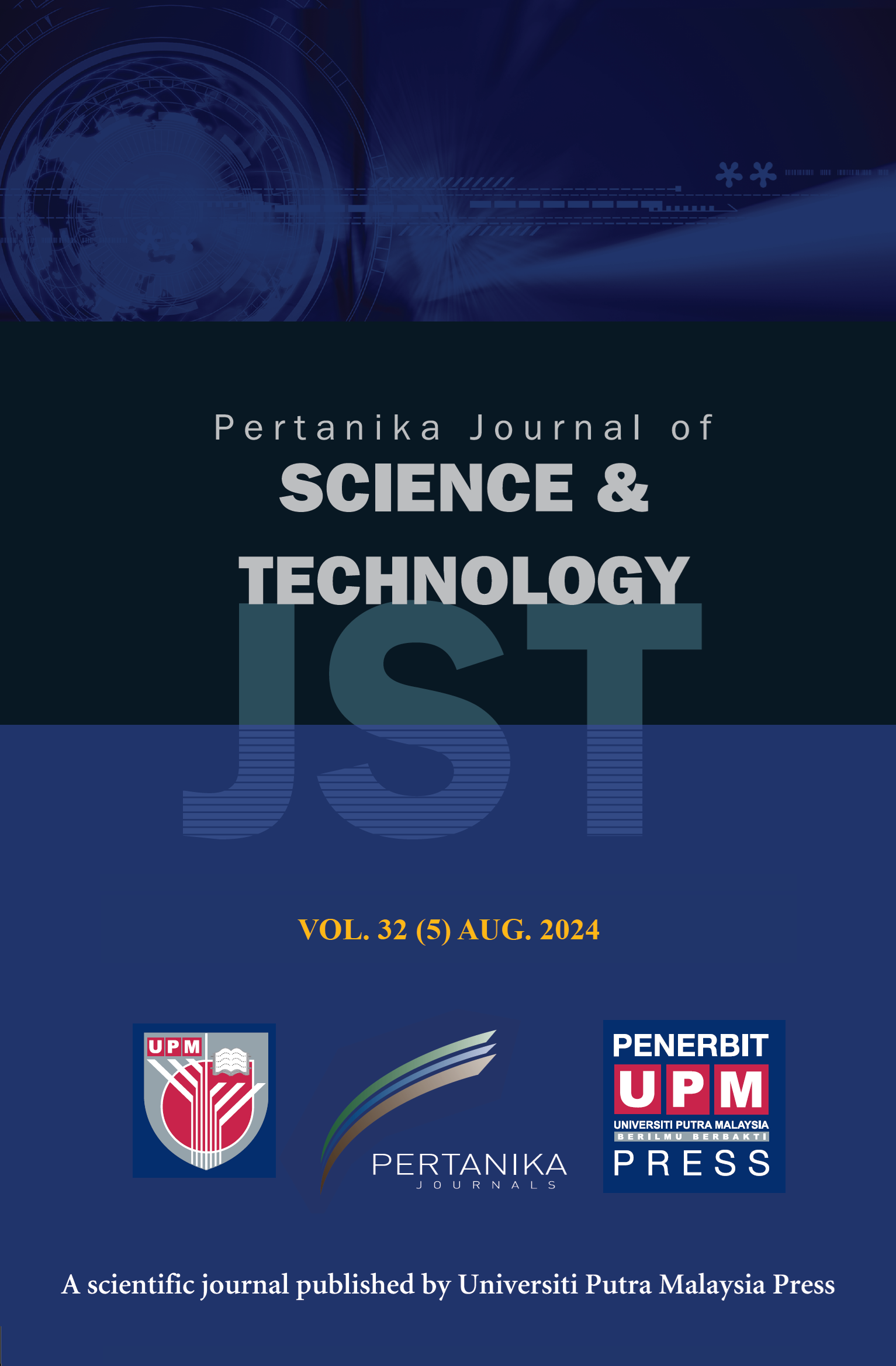PERTANIKA JOURNAL OF SCIENCE AND TECHNOLOGY
e-ISSN 2231-8526
ISSN 0128-7680
J
J
Pertanika Journal of Science & Technology, Volume J, Issue J, January J
Keywords: J
Published on: J
J
-
Abu, N. (2017). Does Okun’s law exist in Nigeria? Evidence from the ARDL bounds testing approach. Contemporary Economics, 11(2), 131-144. https://doi.org/10.5709/ce.1897-9254.232
-
Adekoya, A. F., & Razak, N. A. A. (2016). Inflation, deterrence and crime: Evidence from Nigeria using bounds test approach. Journal of Economics and Sustainable Development, 7(18), 23-32.
-
Ahad, M. (2016). Nexus between income inequality, crime, inflation and poverty: New evidence from structural breaks for Pakistan. International Journal of Economics and Empirical Research, 4(3), 133-145.
-
Anser, M. K., Yousaf, Z., Nassani, A. A., Alotabi, S. M., Kabbani, A., & Zaman, K. (2020). Dynamic linkages between poverty, inequality, crime, and social expenditures in a panel of 16 countries: Two-step GMM estimates. Economic Structures, 9, Article 43. https://doi.org/10.1186/s40008-020-00220-6
-
Arif, I., Jawaid, T., & Iqbal, S. (2017). Dynamics of homicide rates in Asian countries: A quantitative study. Abasyn Journal of Social Sciences, 10(1), 149-162.
-
Chintrakarn, P., & Herzer, D. (2012). More inequality, more crime? A panel cointegration analysis for the United States. Economics Letters, 116(3), 389-391. https://doi.org/10.1016/j.econlet.2012.04.014
-
Eva, K. (2021). Changes in crime-related factors and subjective well-being over time and their mutual relationship. International Journal of Law, Crime and Justice, 65, Article 100457. https://doi.org/10.1016/j.ijlcj.2021.100457
-
Federal Government Expenditure. (2021). Section 3: Federal Government Expenditure. https://belanjawan2021.treasury.gov.my/pdf/revenue/2021/section3.pdf
-
Guza, G. M., Musa, A. B., & Elijah, S. (2018). Violent crime and unemployment in Nigeria: An ARDL bound test cointegration. Journal of Economic Info, 6(4), 21-24. https://doi.org/10.31580/jei.v6i4.1097
-
Habibullah, M. S., & Baharom, A. H. (2008). Crime and economic conditions in Malaysia: An ARDL bounds testing approach. Munich Personal RePEc Archive (MPRA), 11910.
-
Habibullah, M. S., Baharom, A. H., Din, B. H., Muhamad, S., & Ishak, S. (2014). Crime and unemployment in Malaysia: ARDL evidence. Journal of Governance and Development, 10(2), 69-86.
-
Hamid, N., & Bitran, M. (2021). Unemployment insurance generosity and crime. Applied Economics Letters, 28(13), 1076-1081. https://doi.org/10.1080/13504851.2020.1798337
-
Hamuda, A. M., Šulivoka, V., Gazda, V., & Horvath, D. (2013). ARDL investment model of Tunisia. Theoretical and Applied Economics, 2(529), 57-68.
-
Hassan, M. S., Akbar, M. S., Wajid, A., & Arshed, N. (2016). Poverty, urbanization and crime: Are they related in Pakistan? International Journal of Economics and Empirical Research, 4(9), 483-492.
-
Hazra, D., & Cui, Z. (2018). Macroeconomic determinants of crime: Evidence from India. Journal of Quantitative Economics, 16(1), 187-198. https://doi.org/10.1007/s40953-018-0127-6
-
Hussin, A., Aziz, N. N. A., Halim, R. A., & Samsuddin, M. A. (2020). Unemployment, immigrants, price level, population and crime: Cointegration analysis of Malaysia. International Journal of Academic Research in Economics and Management Sciences, 9(2), 49-60. http://doi.org/10.6007/IJAREMS/v9-i2/7354
-
Ishak, S., & Bani, Y. (2017). Determinants of crime in Malaysia: Evidence from developed states. International Journal of Economics and Management, 11, 607-622.
-
Kathena, I. N., & Sheefeni, J. P. S. (2017). The relationship between economic growth and crime rates in Namibia. European Journal of Basic and Applied Sciences, 4(1), 51-62.
-
Khan, N., Ahmed, J., Nawaz, M., & Zaman, K. (2015). The socio-economic determinants of crime in Pakistan: New evidence on an old debate. Arab Economic and Business Journal, 10(2), 73-81. https://doi.org/10.1016/j.aebj.2015.01.001
-
Kizilgol, O., & Selim, S. (2017). Socio-economic and demographic determinants of crime by panel count data analysis: The case of EU 28 and Turkey. Journal of Business, Economics and Finance, 6(1), 31-41. https://doi.org/10.17261/Pressacademia.2017.383
-
Lazim, M. A. (2011). Introductory business forecasting. A practical approach (3rd ed.). UiTM Press.
-
Mulok, D., Kogid, M., Lily, J., & Asid, R. (2016). The relationship between crime and economic growth in Malaysia: Re-examine using bound test approach. Malaysian Journal of Business and Economics, 3, 15-26.
-
Narayan, P. K. (2005). The saving and investment nexus for China: Evidence from cointegration tests. Applied Economics, 37(17), 1979-1990. https://doi.org/10.1080/00036840500278103
-
Nkoro, E., & Uko, A. K. (2016). Autoregressive distributed lag (ARDL) cointegration technique: Application and interpretation. Journal of Statistical and Econometric Methods, 5(4), 63-91.
-
Numbeo. (2021). Asia: Crime index by country 2021 mid-year. https://www.numbeo.com/crime/rankings_by_country.jsp?title=2021-mid®ion=142
-
Peng, X., Cheng, L., & Gong, M. (2021). Measuring public-involving economic crime: A case study in Beijing, China. International Journal of Law, Crime and Justice, 65. https://doi.org/10.1016/j.ijlcj.2021.100465
-
Pesaran, M. H., & Shin, Y. (1999). An autoregressive distributed lag modeling approach to cointegration analysis. In S. Strøm (Ed.), Econometrics and economic theory in the 20th century: The Ragnar Frisch Centennial Symposium (Econometric Society Monographs, pp. 371-413). Cambridge University Press. https://doi.org/10.1017/CCOL521633230.011
-
Rahman, Y. A., & Prasetyo, A. D. (2018). Economics and crime rates in Indonesia. Journal of Economics and Policy, 11(2), 403-414. https://doi.org/10.15294/jejak.v11i2.16060
-
Rosenfeld, R., Vogel, M., & McCuddy, T. (2019). Crime and Inflation in U. S. Cities. Journal of Quantitative Criminology, 35, 195-210. https://doi.org/10.1007/s10940-018-9377-x
-
Schargrodsky, E., & Freira, L. (2021). Inequality and crime in Latin America and the Caribbean: New data for an old question (UNDP LAC Working Paper 13). Corporación Andina de Fomento. https://scioteca.caf.com/handle/123456789/1786
ISSN 0128-7680
e-ISSN 2231-8526




